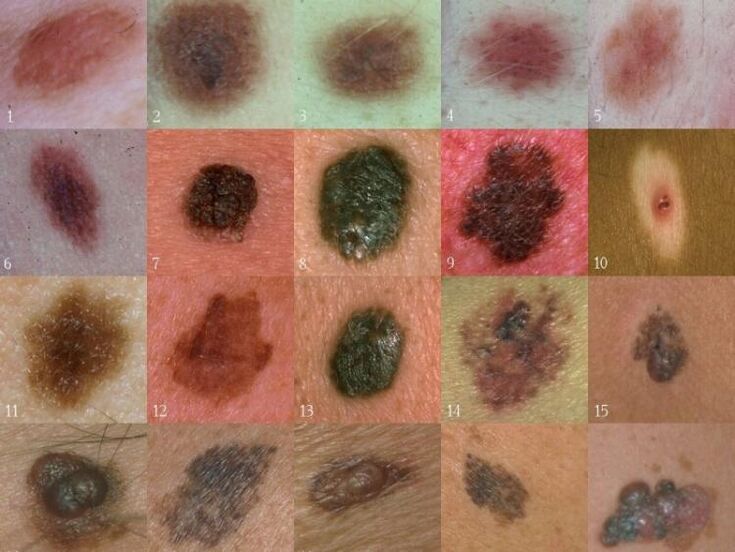
Some types of human papillomavirus that penetrate through damaged areas of skin cause rapid growth of cells in the top layer. As a result, warts form. The types of warts can vary. They are formed all over the skin and can vary widely in size and color. Usually, warts do not cause any significant problems, they go away on their own. Even so, in some cases it is worthwhile to see a doctor and get them removed.
The types of warts on the body are usually differentiated based on where they spread.
Types of warts
- vulgar (general)
- Plantar,
- Apartment (teen),
- Genital warts (genital warts)
- Filiform,
- Senile (seborrheic keratoma).
Common warts
Vulgar or common - this is the most common type of these neoplasms. They are small nodules (up to 10 mm) with a rough surface. They protrude very slightly above the surface of the skin and are completely painless. Common warts form on any part of the body, but the most common warts are on the neck, head, elbows, or squats.
Another characteristic of common warts is that they appear alongside the "major warts", large warts, smaller ones.
Plantar
This is one of the varieties of common warts, also called "pointed". It's located on the skin of the foot, mostly on the side of the sole. It consists of several papillae fused together and surrounded by a roller. Sometimes the spitz looks like a dense thorn that has grown on the skin. Sometimes plantar warts can grow in the skin. Then they look like a fossa, surrounded by a roller with protruding papillae. Plantar warts often cause discomfort to a person as they cause discomfort and even pain while walking.
Their formation can be provoked by tight or uncomfortable shoes. In such shoes, areas of the skin become damaged and more susceptible to the penetration and development of the human papillomavirus.
Even
Flat warts are more common in children and teenagers at a young age, so they are referred to as teenagers. These are small formations (usually around 3mm). They can be round or irregular. The surface of juvenile warts is smooth and flat. The color is usually the same as that of the skin, sometimes flat warts can have a yellowish tinge. These types of warts can form on any part of the skin, but their "favorite places" are on the face and hands.
Flat warts usually do not cause physical discomfort and go away over time. However, when they are placed in prominent locations, they cause aesthetic discomfort, so patients often turn to doctors and beauticians to have them removed.
Genital warts
Such warts are localized in the genital area, and the infection occurs through sexual contact. The most common distribution of genital warts is in the groin, penis, labia, and anus. These types of warts can also form in the mouth.
Genital warts are small skin growths with a sharp point, small papillae. These papillae fuse together and often look like cauliflower. The color of genital warts is dark flesh, pink.
Treatment of genital warts is carried out by dermatovenerologists with the participation of a gynecologist or urologist.
Filiform
Filiform warts (acrochords) are more common in older people. They are elongated growths that resemble a thread. The size of thread warts can be up to 1 cm. The localization of the acro chord is the skin of the neck and face. Most often, they form on the eyelids and lips. There are thread warts under the armpits.
Acrochords are often violated because of their elongated shape. In most cases, they do not go away on their own, and after removal there are often relapses with the formation of new warts in the same places.
senile
Seborrheic keratomas most commonly develop in old age due to changes in the skin. They are found all over the body, but more often on the neck, arms, and chest. These are small flat papules with clear boundaries. Age warts are more often yellow-pink or brown, their size is up to 2 cm, they can be single and can form whole foci. Dead skin cells form the basis of such neoplasms. At first they are soft, but over time they become dense and covered with cracks.
Age warts require special attention as they are prone to malignant changes.
So there are different types of warts. Most of them are harmless, but it is better to immediately consult a doctor and convince yourself.













































































